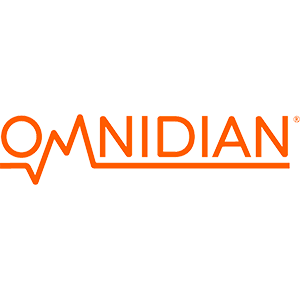
Solving the Clean Energy Labor Shortage with Amicus O&M Cooperative

Senior Content Strategist
Solar installation jobs are predicted to grow 22% by 2032, with roughly 3,500 new roles opening up every year. But what about the jobs of solar O&M technicians, who operate and manage solar systems years after they’re installed? Aren’t these roles just as – if not more – important?
These questions are constantly on the mind of Amanda Bybee, CEO of Amicus O&M Cooperative (AOMC). Since founding the branch out of its sister cooperative, Amicus Solar, Ms. Bybee has worked tirelessly to bring solar O&M companies and their employees not just the attention and support they need, but the higher pay and appreciation they deserve.
Here’s how (and why) AOMC was started, how it functions, and how it currently works to boost the clean energy workforce.
How It All Started
With 20 initial members, Ms. Bybee founded AOMC in 2016 with the help of a grant through the Sunshot Initiative from the U.S. Department of Energy.
The idea was to help regional solar servicing providers work together in a more consistent and standardized fashion in the way that they approach O&M solar services and to band together to manage national portfolios.
“What we realized in 2016 was that it was still the Wild West,” Ms. Bybee said. “There was no standard scope of work, pricing was all over the map – so the Cooperative set out to create a set of tools and templates that the member companies could use. The idea was to streamline the client’s experience and ensure that our member-companies were well coordinated.”
Ms. Bybee noted the Cooperative also started out by predominantly serving commercial and industrial (C&I) and utility-scale customers, but added a residential track because a number of member-companies were branching out to service residential customers due to natural attrition in that sector.
“I’m personally very excited to help a lot of these companies grow their service departments and ensure that they are meaningful contributors to overall company profit,” she added.
Today, AOMC boasts 42 active companies with increasing membership interest. Ms. Bybee explained that new members go through a vetting process which addresses factors like values alignment and geographic saturation, but there is often overlap because Ms. Bybee approaches membership selection from an “abundance mentality.”
“Nobody has the market cornered in any geographic area with all the service work that needs to be done, so I see benefits to having some overlap,” she explained. “When you’ve established a level of trust in each other’s work quality, if you get in a pinch and need some help… it’s nice to be able to lean on your fellow member-company. There’s value in that redundancy.”
There was no standard scope of work… so the Cooperative set out to create a set of tools and templates that the member-companies could use.
– Amanda Bybee, Amicus O&M Cooperative
How Amicus O&M Operates
Part of the success behind AOMC’s appeal is its structure: it boasts a knowledge-sharing culture where all members have equal footing. Ms. Bybee believes the core of a cooperative is based on this sharing, so she works to facilitate frequent meetings where member-companies can interact with each other from all over the country.
Additionally, even though some of the member-companies at AOMC are competitors, Ms. Bybee believes that they all stand to gain so much when they exchange knowledge and insights. She fosters this idea in current member-companies and seeks it out in new ones, encouraging them to let go of close-to-the-chest philosophies.
“It’s really the heart of it all, because I find service people are the nicest people on the planet,” she explained. “They’re problem solvers; they want to take care of customers and systems. So it’s a great way to get to know each other and help each other solve problems on behalf of our collective customer base.”
Each member-company holds equal shareholder status within the Cooperative, which aids this transparency goal. Ms. Bybee noted this structure helps each company see each other as peers, which promotes a “different type of relationship when you’re engaging with your partners and peers, as opposed to it being hierarchical as a client-provider.”
“The fact of the matter is, what we’re doing is not rocket science – most of it is not even proprietary,” she said. “What we’re after is delivering good, solid service. That willingness to share, that willingness to help each other, is the fundamental nature of a cooperative.”
What Keeps Solar O&M Providers Up at Night
Despite the progress AOMC has made over the years, Ms. Bybee said there’s still a lot of work to do, especially in terms of meeting the demand for quality, skilled solar technicians. The Cooperative surveyed its members a few years ago to ask about their biggest challenges, and the #1 answer that came back was hiring enough trained and experienced technicians.
“The labor shortage is the #1 issue: everyone loves to hire experienced installers and electricians from adjacent trades, but the truth is, there are not enough people with the specialized skill sets and aptitudes to fill the need,” Ms. Bybee said. “We have so much work to do, and that’s on the existing base of installed systems, not to mention the astronomical growth we’re going to see.”
AOMC started developing a training program for solar technicians for this exact reason, but quickly realized it needed to expand its offering. So Ms. Bybee applied for another grant from the U.S. Department of Energy Solar Energy Technologies Office that was awarded in 2023 to help the Cooperative standardize, train, credential, and develop the workforce of solar O&M technicians.
“We’ve expanded our reach into a much broader stakeholder advisory committee,” Ms. Bybee said, noting that 50+ companies are now included in AOMC’s work, even if they’re not members. “We’re building consensus well beyond the borders of the Cooperative and working with the industry at large to develop a universal technician competency framework so that we all use the same language when we talk about a ‘level one’ technician, for example.”
Ms. Bybee said that while general consensus has been reached on this framework, the Cooperative is now expanding its training programs to get post-installation support technicians ready for field work. She’s also working closely with the Solar Energy Industries Association (SEIA) and American Clean Power (ACP), because they’re accredited with the American National Standards Institute and plan to publish their own standards.
Developing training and standards is all well and good, but Ms. Bybee added that the Energy Department grant is also meant to help address equity concerns.
“This concept of advancing equity, which is really access to these jobs, is very important to me,” she said. “That’s part of the innovation of our program: we’re not just looking for experienced installers and electricians. We want to be able to welcome entry-level workers from all walks of life and bring them straight into O&M.”
Everyone loves to hire experienced installers and electricians from adjacent trades, but the truth is, there are not enough people with the specialized skill sets and aptitudes to fill the need.
– Amanda Bybee, Amicus O&M Cooperative
How Prevailing Wage Comes Into Play
Of course, getting more workers into solar servicing brings up other concerns about how aspects of the Inflation Reduction Act (IRA) – such as prevailing wage – affect different technician roles. Ms. Bybee said there are unfortunately still a lot of unanswered questions about how the IRA applies to solar O&M work.
“I find myself grappling with that, because I want a clear, black-and-white answer as to how we apply the rules so that everyone does it the same way, it’s a level playing field, and we’re clearly compliant,” she said. “I do earnestly believe most companies want to do the right thing: they want to be compliant and adhere to the spirit and letter of the law. However, there’s a lot of gray [area in the IRA], and getting comfortable with gray is challenging.”
Despite this uncertainty, Ms. Bybee added that the IRA is poised to enable the lowest-paid people to be lifted up as vital members of the solar industry.
“We are going to have to do something to retain talent, and that something is normalizing the prevailing wages, which is a great thing,” Ms. Bybee said, explaining that if everybody in the industry has to levelize to the same salary adjustment, the shock is reduced.
“If I’ve learned anything in my 21 years in the solar industry, it’s that we can adapt to anything,” she added. “We can factor this in. We can adjust to it. And it will benefit the technicians who are on the front lines doing the work to keep this technology up and running. If you get all the solar installed, but then it breaks and stays offline, it does us no good.”
What Would Ms. Bybee Do?
With the bulk of Ms. Bybee’s work centered around the standardization and growth of solar O&M technician roles, it’s unsurprising her wish for the industry is to see this work more highly valued. But what is probably more novel is that she wants this respect and recognition to be present throughout the entire development process.
“What we typically see is the developers and financiers plug in ‘a number’ for O&M services, but sometimes it’s not based in reality. It sets us up to have this ongoing and persistent tension between owners and O&M providers,” she explained, “but it would be really nice for that to loosen up a little bit and to allow servicing providers to pay their people better, to make a little bit more profit, and to take care of their employees in a more holistic way.”
Ms. Bybee added if post-installation services could be more highly valued, and owners and providers could have a little additional wiggle room, that would help the O&M industry maintain solar systems responsibly, which would ultimately benefit the entire country.
We want to be able to welcome entry-level workers from all walks of life and bring them straight into O&M.
– Amanda Bybee, Amicus O&M Cooperative
“This would ensure the infrastructure we’re currently building out really fulfills its promise as a clean and reliable source of energy,” she concluded.








